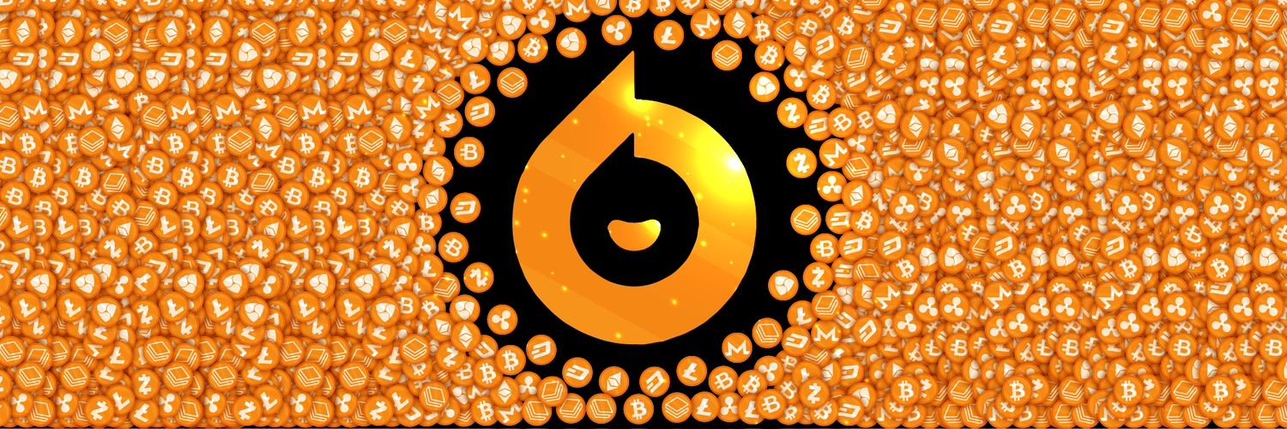OCEANからJPYへの交換
Ocean Protocolの市場情報
現在のOcean Protocol価格(JPY)
暗号市場が加熱: 機関投資家の流入、Ethereumのスケーリング、AI駆動のナラティブが2025年11月19日を支配
2025年11月19日が終わりを迎えるにあたり、暗号通貨市場はダイナミックでますます成熟した金融エコシステムとしての軌道を維持しています。今日の市場活動は、重要な機関投資家の関与、主要なブロックチェーンにおける重要な技術革新、そして急速に進化する規制環境によって特徴づけられています。最近のボラティリティがあるにもかかわらず、全体的なセンチメントは広範な採用と革新的なユースケースに駆動されているため、慎重な楽観主義を伴っています。
ビットコインが価格変動と機関投資家の受け入れの中で地位を固める
ビットコインのパフォーマンスは2025年を通じて中心的な話題となっており、多くのアナリストはこれを主導的な暗号通貨にとっての「黄金の年」と叫んでいます。この資産は、スポットビットコイン上場投資信託(ETF)への過去にない機関投資家の採用を見たことで、記録的な流入を記録しました。これらの流入はビットコインを新たな史上最高値に押し上げ、2025年8月には124,000ドルを超える報告もありました。今年の価格予測は106,000ドル前後で平均され、強気の予想は133,300ドルに達しています。
しかし、市場は挑戦に直面していないわけではありません。11月17日頃の報告によると、ビットコインは91,000ドルに下落し、広範な売り圧力の中で2025年の利益の一部を消し去りました。これは、ビットコインがますます成熟したマクロ資産として振る舞う一方で、依然として暗号空間を特徴づける内在的なボラティリティを強調しています。政策サイクルによって影響を受けるビットコインに対して、2025年末までに機関投資家の資金が約1200億ドル流入することを予測しています。これにより、ビットコインの金融資産としての役割がさらに強化されます。
イーサリアムの野心的なスケーラビリティロードマップが形を成す
イーサリアムは2025年に変革的な年を迎えており、スケーラビリティ、セキュリティ、ユーザーエクスペリエンスを向上させるための主要なアップグレードが行われています。ネットワークの野心的な目標は、一連の重要な実装を通じて1秒あたり10万件のトランザクション(TPS)を超えることです。「サージ」フェーズ、特にProto-Danksharding(EIP-4844)などの革新を通じて、トランザクションコストを劇的に削減し、Layer 2ソリューションでのスループットを向上させることが重要です。データアベイラビリティサンプリング(DAS)、シャーディング、ロールアップ、ペクトラアップグレードなどのさらなる強化は、スケーリングBLOBオブジェクトとLayer 1のパフォーマンス改善を強調するイーサリアムの簡略化されたロードマップの一部です。
スケーラビリティを超えて、イーサリアムの長期ビジョンは、AIエージェント、自律機械の統合、そして人間の相互作用におけるプライバシーの保障を含んでおり、オープンソースシステムの育成を目指しています。2025年11月18日に「ラストマイル」プライバシーのためのKohakuフレームワークの発表など、プラットフォームの進化は続いています。
DeFiの拡大する地平線: 現実世界の資産と機関統合
分散型金融(DeFi)は2025年に新たな高みに達しており、持続的な革新と増大する機関の関心によって推進されています。Layer 2ソリューションは、より高速で低コストのトランザクションを実現し、より多くの分散型アプリケーションとユーザーを引きつけています。重要なトレンドとして、DeFiの機関投資家による採用が増加しており、従来の金融プレーヤーが新たな収益や金融商品を探求しています。
現実世界の資産(RWA)のトークン化は、伝統的な金融をブロックチェーンと結びつける支配的なナラティブとして浮上しており、不動産、金、債券などの資産をトークン化しています。これは、伝統的市場に流動性をもたらすだけでなく、世界的な投資家基盤に対する部分的な所有権への扉を開きます。焦点は、トークンの排出量ではなく、手数料や基礎となるキャッシュフローから得られる「実収益」にシフトしています。ステーブルコインは重要な要素であり、透明性、規制、過剰担保に対する強調が高まり、システミックリスクを軽減するためにあります。
AI、DePIN、そして新しいETFナラティブによって駆動されるアルトコイン
アルトコイン市場は2025年にいくつかの魅力的なナラティブで賑わっています。人工知能(AI)トークンとエージェントが先頭を切り、次の波のオンチェーン自動化と知能アプリケーションを推進しています。分散型物理インフラストラクチャネットワーク(DePIN)やWeb3ゲームトークンも、産業を変革する可能性により、注目を集めています。金のトークン化は、金価格の上昇と世界経済の不確実性に駆動されて、もう一つの興味深い、とはいえニッチなナラティブを提示しています。
画期的なイベントとして、XRPは2025年11月13日にその初のETFを発表し、すぐに年間ETF記録を打ち破り、資産に対する機関投資家の新たな認識の段階を示しました。
規制の明確性が成長と主流受容を促進
暗号の規制環境は世界的に固まっており、2025年は監視と明確性の増加にとって重要な年となっています。アメリカでは、新しい大統領政権が暗号に対する公的な支持を示し、2025年7月にGENIUS法が成立し、ステーブルコインのための重要な規制フレームワークを導入しました。この「軽い規制の枠組み」は、さらなる成長と採用を促進すると予測されています。2024年12月から完全に施行されるヨーロッパの暗号資産市場規制(MiCA)は、暗号サービスのための包括的な基準を設定しており、香港などの地域はステーキングサービスのガイドラインを発表しました。
Bitgetのユニバーサル取引所の景観における戦略的拡大
Bitgetは、2025年11月19日に特にユニバーサル取引所(UEX)としての地位を確立しています。この取引所は「ストック先物ラッシュ」キャンペーンの第6段階を開始し、ユーザーがトークン化されたNVDA株を獲得できる機会を提供しています。このキャンペーンは11月17日に開始され、11月22日に終了する予定です。数日前の11月15日には、Bitgetが革新、AI、DePINゾーンにおいてPlanck(PLANCK)を上場することを発表しました。さらに、11月13日にはTiger.comとのパートナーシップが確立され、ユーザーへの高速取引ツールが向上しました。
より広い文脈において、Bitgetは2025年8月にTSLAやNVDAなどの主要な現実世界の資産をフィーチャーしたストック先物をデビューさせ、2025年9月には25の主要米国株に対するUSDTマージンの永久先物を発表しました。このプラットフォームは著しい成長を遂げ、2025年第2四半期までにユーザー数が1億2000万人を超え、Bitget PROやAIエージェントGetAgentなどの革新的な機能を導入しました。この積極的な拡大とVIPの需要の高まりは、Bitgetの伝統的金融と暗号空間の架け橋を担当するというコミットメントを強調しています。
今日の暗号市場は、絶え間ない革新と世界の金融構造への統合の増加を証明しています。ボラティリティが常に存在する一方で、機関の採用、技術の成熟、規制環境の明確化の根本的なトレンドは、デジタル資産空間のさらなる進展を描いています。
Ocean Protocolの価格は今日上がると思いますか、下がると思いますか?
今日のOcean Protocolの価格の他にも以下を検索できます。
Ocean Protocol(OCEAN)の購入方法Ocean Protocol(OCEAN)の売却方法Ocean Protocol(OCEAN)とはOcean Protocol(OCEAN)を購入していたらどうなっていたでしょうか?今年、2030年、2050年のOcean Protocol(OCEAN)の価格予測は?Ocean Protocol(OCEAN)の過去の価格データはどこでダウンロードできますか?本日の類似の暗号資産の価格は?暗号資産をすぐに入手したいですか?
クレジットカードで暗号資産を直接購入しよう。現物プラットフォームでさまざまな暗号資産を取引してアービトラージを行おう。Ocean Protocolの価格予測
OCEANの買い時はいつですか? 今は買うべきですか?それとも売るべきですか?
2026年のOCEANの価格はどうなる?
+5%の年間成長率に基づくと、Ocean Protocol(OCEAN)の価格は2026年には¥40.55に達すると予想されます。今年の予想価格に基づくと、Ocean Protocolを投資して保有した場合の累積投資収益率は、2026年末には+5%に達すると予想されます。詳細については、2025年、2026年、2030〜2050年のOcean Protocol価格予測をご覧ください。2030年のOCEANの価格はどうなる?
Ocean Protocol (OCEAN)について
Ocean Protocol(オーシャン・プロトコル)とは
近年、データ作成の劇的な急増により、安全で効率的かつ透明性の高いデータ共有を可能にするプラットフォームへの需要が高まっています。現在、多くのプラットフォームで、断片化、中央集権化、不透明性の問題への取り組みが進んでいます。Ocean Protocol(オーシャン・プロトコル)は、こうした問題に対する答えとして、データ所有者がプライバシーやセキュリティを放棄することなくデータをコントロールしたまま収益化できる分散型ネットワークを提供しています。
Trent McConaghy、Bruce Pon、Chirdeep Singh などのブロックチェーン、AI、データサイエンス分野の専門家によって2017年に設立された Ocean Protocol は、ブロックチェーンを基盤としたエコシステムとして運営されています。このシステムは、データマーケットプレイスのセットアップを簡素化し、機械学習、調査、分析などの目的で貴重なデータを求めるデータプロバイダーと消費者の間の橋渡しとなります。同プロトコルは、医療、金融、電子商取引など、さまざまな業界でのデータ活用と共有の在り方に革命をもたらすことを目指しています。
Ocean Protocol は単なるデータマーケットプレイスではなく、データプロバイダーが所有権を保持したままデータをアップロードし、そこから利益を得ることを可能にする安全で透明性の高いチャネルとして機能しています。一方、消費者は Ocean Protocol ネットワークのネイティブ仮想通貨である OCEAN トークンを使用し、このデータにアクセスできます。プライバシーの保護とセキュリティの強化に重点を置くこのプラットフォームは、機密データや秘匿情報を管理する企業に好まれる選択肢となると見られます。
リソース
ホワイトペーパー:https://oceanprotocol.com/tech-whitepaper.pdf
公式ウェブサイト:https://oceanprotocol.com/
Ocean Protocol の仕組み
Ocean Protocol は、ブロックチェーン技術とスマートコントラクトを活用し、安全で透明性の高いデータ共有と収益化を促進する分散型データ交換プロトコルとして運営されています。このプラットフォームは、マーケットプレイス、データ資産、サービス契約の3つの要素で構成されています。
マーケットプレイスは、データ提供者と消費者をつなげる場であり、取引を行うハブとしての役割を果たします。データ提供者は、価格やアクセス条件などの利用条件を指定し、データセットをアップロードします。消費者は、マーケットプレイスを閲覧しニーズに合ったデータセットへのアクセスを購入します。
データ資産とは、プラットフォーム上で共有される実際のデータセットを意味し、金融データから医療データまで様々なものがあり、データの元来の権利者であれば誰でもアップロードできます。同プラットフォームは、データ提供者がデータのコントロールを保ちながら、データにアクセスできる対象者を決め、安全で改ざんされない方法での共有を保証します。
サービス契約は、プラットフォーム上でのデータ共有と収益化の条件を規定するものです。スマートコントラクトによって強制力を持つことになるこうした契約では、特定の条件が満たされた際に自動的に契約条件を実行し、シームレスな取引プロセスが促進されます。
演算レイヤー、ストレージレイヤー、ネットワークレイヤー、アプリケーションレイヤーの4つの主要レイヤーで構成されるOcean Protocol スタックは、相乗的に機能しあいながら安全で効率的なデータ共有と収益化を実現します。入り組みあったこの複雑なシステムにより、ネットワーク上の異なるノード間の通信とデータ転送が容易になり、安全で効率的なデータ共有が保証されます。
OCEAN(オーシャン)トークンについて
Ocean Protocol プラットフォームのネイティブ仮想通貨である OCEAN トークンは、データセットやサービスへのアクセス権の購入、そしてネットワークに対するデータやサービスの提供への対価としての報酬など、価値交換の媒体としての役割を果たしています。イーサリアムブロックチェーン上に構築された ERC-20トークンとして、イーサリアムベースのウォレットや取引所との間で幅広い互換性があります。
OCEAN トークンはトランザクションを実現するだけでなく、データ提供者が自分のデータセットをプラットフォームに提供するに当たり、品質、適性、データ消費者の需要に基づいて報酬を得るためのインセンティブとなります。さらに、トークン保有者はプラットフォームのガバナンスにおいて重要な意思決定プロセスに参加し、プラットフォームの将来の発展を形作る上で中核的な役割を果たすことになります。
Ocean Protocol が金融に与える影響
金融セクターにおいて、Ocean Protocol は金融データの安全で透明な共有を可能にする画期的な存在となっています。金融機関は大規模なデータセットにリアルタイムでアクセスしこれを分析することで、意思決定プロセスを強化できます。Ocean Protocol は、コラボレーションとイノベーションを促進することで、データ共有をより効率的で安全かつ透明性の高いものにし、金融業界を大きく変える可能性を秘めています。
さらに、Ocean Protocol の非中央集権的な性質により、データ提供者と消費者の双方に利益をもたらすユニークなソリューションが生まれ、金融分野におけるデータの共有と収益化の方法に革命をもたらす可能性があります。ブロックチェーン技術の普及が進むにつれ、Ocean Protocol などの安全な分散型データ共有ソリューションの需要が高まり、長期的には有望な投資先として位置づけられると予想されています。
Ocean Protocol の価格決定要因
高度に動的な仮想通貨の世界では、Ocean Protocol の価格は無数の要因に影響を受けており、投資を検討するに当たり OCEAN トークンの価格チャートに注目が集まっています。Ocean Protocol の最新の価値評価は、ブロックチェーン技術を活用したデータ共有と収益化の革新的なアプローチと密接に結びついています。同プロトコルは分散型データ交換プロトコルとして、ヘルスケア、金融、e コマースなど様々な分野から注目を集めることとなり、埋もれていた市場を切り開くこととなりました。この事実が OCEAN 仮想通貨価格に直接的な影響を与えています。BMW や Roche などの知名度の高い組織との提携により OCEAN の信頼性そして時価総額が高まっており、このことが OCEAN トークン価格の分析において重要なポイントとなっています。
OCEAN トークンの時価総額は、ネイティブ仮想通貨である OCEAN トークンへの積極的な参加と投資によっても大きく影響を受けています。投資家やデータの熱心な観察者は、Ocean Protocol の価格予測や価格推移を注視し、Ocean Protocol の ROI(投資収益率)の可能性を測っています。トークンは、取引を実現させ、データ提供者に貴重なデータセットを共有するインセンティブを与えるなど、エコシステムにおいて極めて重要な役割を果たしています。この活気ある市場のダイナミクスは、しばしば Ocean Protocol の価格ライブ・チャートに反映されることとなり、データ市場における需給のダイナミクスによって変動します。OCEAN の対 USD 価格は、投資家が情報に基づいた意思決定を行うために頻繁に参照することとなる重要な指標であり、しばしば OCEAN の暗号技術ニュースやブロックチェーン分野の発展に影響を受けます。
今後、同プラットフォームはデータ価値の創造ループの成熟に焦点を当てた次のフェーズに入ることから、Ocean Protocol の価格見通しは有望と思われます。分散型金融(DeFi)と大規模言語モデル(LLM)に戦略的に重点を置いていることからも、先進的なアプローチを取っていることが見られ、OCEAN トークンの将来の価格に影響を与えているといえるでしょう。同プラットフォームがイノベーションを続けその提供内容を拡充させていく中、Ocean Protocol の価格グラフの上昇傾向を反映する形で Ocean Protocol の取引量が急増すると予想されます。投資家や熱心な支持者であれば、Ocean Protocol への投資に際し活気に満ち有望な展望を共に形作るに当たり、最新の OCEAN トークンの時価総額動向と分析を続けるべきといえるでしょう。
まとめ
近年、信頼性が高く安全なデータ共有プラットフォームへの需要が急増しており、Ocean Protocol はこの分野の先駆者の地位を確立しており、ブロックチェーンネットワークを通じて透明で安全かつ効率的なデータ収益化の軌跡を敷くことが有望視されています。同プラットフォームは、データプロバイダーと消費者の間の分散型橋渡しとして機能することで、安全でシームレスなデータの取引を実現しています。そして OCEAN トークンは、このエコシステムの核を担う存在となっています。オーシャン・プロトコルは、ブロックチェーン技術の強みを活かしながら金融やヘルスケアなど様々なセクターのイノベーションとコラボレーションを促進し、分散型データ共有ソリューションへのシフトの先駆者となっています。同プラットフォームは分散型金融(DeFi)と大規模言語モデル(LLM)に焦点を当てながら成長軌道を継続して進んでおり、仮想通貨界における有望なベンチャー企業となっています。また、ブロックチェーンの発展と仮想通貨OCEANの動向を注視する投資家に対しても、潜在的に実りある機会をもたらしています。興隆するデータ市場における破壊的革新のポテンシャルについてより理解を深めるには、公式ウェブサイトとホワイトペーパーもご覧ください。
Bitgetインサイト




OCEANからJPYへの交換
OCEANの各種資料
タグ:
Ocean Protocol(OCEAN)のような暗号資産でできることは?
簡単入金&即時出金買って増やし、売って利益を得ようアービトラージのための現物取引ハイリスク・ハイリターンの先物取引安定した金利で受動的収入を得ようWeb3ウォレットで資産を送金しようOcean Protocolとは?Ocean Protocolの仕組みは?
Ocean Protocolのグローバル価格
もっと購入する
よくあるご質問
Ocean Protocol への投資の有望性
Ocean Protocol のユースケース
OCEAN の価格に影響を与える要因
Ocean protocol への OCEAN のステーキング方法
Ocean Protocol における収入獲得方法
Ocean Protocol の特徴
Ocean Protocolの現在の価格はいくらですか?
Ocean Protocolの24時間取引量は?
Ocean Protocolの過去最高値はいくらですか?
BitgetでOcean Protocolを購入できますか?
Ocean Protocolに投資して安定した収入を得ることはできますか?
Ocean Protocolを最も安く購入できるのはどこですか?
今日の暗号資産価格
Bitgetに新規上場された通貨の価格
注目のキャンペーン
Ocean Protocol(OCEAN)はどこで買えますか?
動画セクション - 素早く認証を終えて、素早く取引へ










